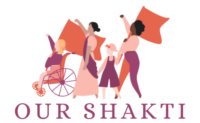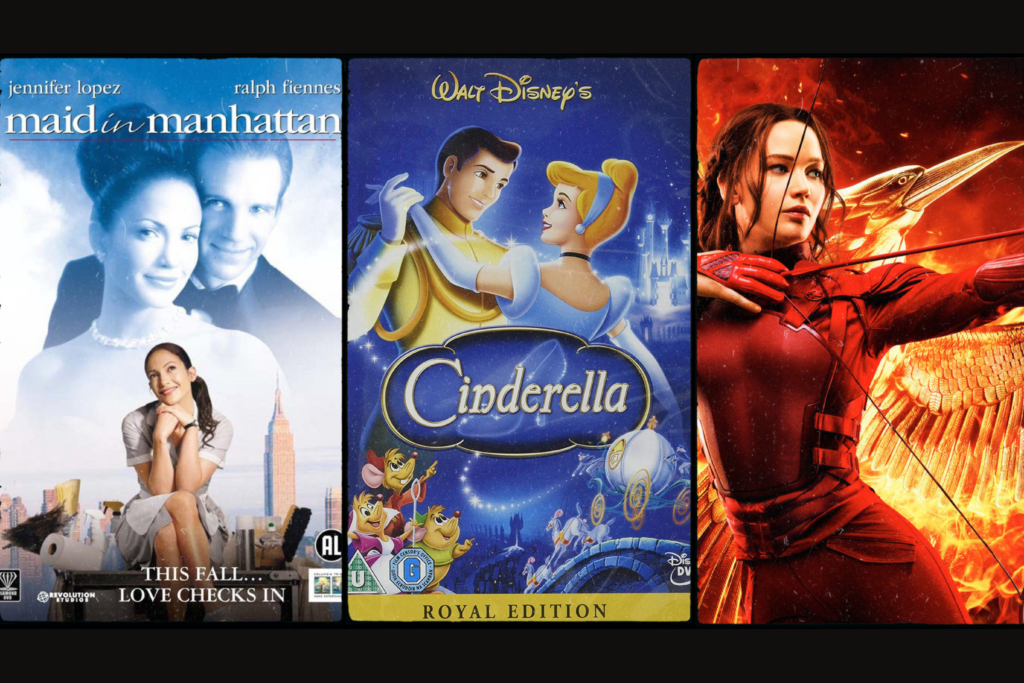A damsel in distress, a maid, the just being there to make the hero look good, a housewife, a lover, a woman who changes a bad man into a good man, a writer, the woman who cannot stand other pretty women, a journalist, a mother, changing from a nerd into a popular girl after a make-over and winning the heart of the hero, a fashion assistant, the bitchy boss, the woman who fights with another woman for a man’s love, this is how women are mostly represented in movies. Movies and TV series are some of the favourite ways for people to spend leisure time. A new study by LG electronics revealed that the average person will spend more than 78,000 hours in front of the television over their lifetime. [1] Film and television are powerful tools of socialization. [2] Yet we rarely pause and reflect on the perceptions of women’s behaviour that we receive from movies. Luckily, many researchers have already been examining film dialogues, the visibility of women, and the roles that women play to shed light on the portrayal of women in movies. Let’s have a look at their findings.
How are women portrayed in movies?
Disney movies, who has not seen them? Many of us grew up with stories about beautiful princesses waiting to be saved by a charming prince. It comes as no surprise that over the past years, Disney movies, in particular, have been scrutinized concerning gender inequality. Scholars examine gender inequality in a variety of ways. For example, some count the words spoken by female and male characters, while others look at the purpose of female and male characters. Fought and Eisenhauer (2016) counted the times when male and female characters spoke. [3] They found that on average, men have three times as many lines as women. This was especially the case for Disney movies in the 90s. For example, men speak 71 percent of the time in “Beauty and the Beast”, 90 percent of the time in “Aladdin”, 68 percent of the time in “The Little Mermaid”, 77 percent of the time in “Mulan” (Mulan was counted as a woman even though she impersonated a man). [4]
In the newer movies like “Tangled,” women have 52 percent of the lines, and in “Brave,” a film about a mother-daughter relationship, they had 74 percent. [5] Good news, you think? Well… not really, Frozen breaks with that trend as 59% of lines are spoken by men. Even in movies that revolve around female characters, men are overrepresented in terms of speaking.
One of the reasons why men speak more is that there are more male characters. The princess is usually concerned with finding a husband, while other characters are inventing things or giving directions. This raises another question, what’s the purpose of women? To just look pretty and find a man? Researchers found that more than half of the compliments that women received had to do with their looks. Only 11 percent were about their skills or accomplishments. [6] In an experiment, students were asked about what remained with them after watching Disney movies. Their main findings were that “women are being dominated, but rarely do they object to it. They are happy to be housewives, to clean and cook and care for the men, and to just sing and seduce men, without doing any serious jobs”. [7] It is precisely these thoughts that some scholars criticize regarding child development. So far, little research has been conducted on the effects of Disney movies on children but many people believe that watching Disney movies is related to perceptions that children get on gender stereotypes.
Moving from children’s movies to adult ones, the Bechdel test is a popular measure for examining how well-rounded and complete the representations of women in movies are. [8] The test asks only three questions:
- Are there at least two women in the film who have names?
- Do those women talk to each other?
- Do they talk to each other about something other than a man?
This test has aimed to prove that women are not only underrepresented in popular movies, but that they are also seldom represented as strong leaders and thinkers. Lauzen (2015) found that female characters are two times more likely than males to be identified only by a life-related role rather than a work-related role, they are consistently younger than their male counterparts, and they are rarely portrayed as formal leaders. [9] Bussey & Bandura (1999) add that women are portrayed as dependent on other characters, over-emotional, and confined to low-status jobs when compared to enterprising and ambitious male characters. [10] As a result, the female audience finds it hard to relate to female characters in movies and people get distorted views of women.
Who are the people behind the female character in the making?
Like many other industries, the movie industry struggles to reach gender parity. There has only been a 3% increase in female employment in the 250 top-grossing films since 1998. [11] Films are most often written, directed, and produced by men. [12] In 2018, women accounted for only eight percent of directors of the top-250 grossing films in the United States. [13] Moreover, one in four films hired either zero women or one woman in the roles of director, writer, producer, executive producer, editor, and cinematographer. It is a very skewed gender distribution which reminds me of a brilliant speech given by Rebel Wilson at the BAFTA Award in 2020. When most film staff is male, the way female characters are shaped is based on the male gaze. Research already indicates that in films with at least one female director and/or writer, women comprised 43 percent of all speaking characters compared to 32 percent in films with solely male directors and writers. [14] Hence, we can carefully assume that when more women are involved in producing films, there is an increase in female representation. In addition, they are also altering the female narrative in books and movies. Take, for example, Suzanne Collins, the writer of the Hunger Games with Katniss Everdeen as the protagonist. Katniss is presented as a courageous and intelligent woman who does what she wants. Or J.K. Rowling, the writer of Harry Potter with Hermoine Granger, a clever supporting character in the story. Hermoine offers solutions based on her knowledge and is often presented as being smarter than Ron and Harry together. Today, we see an increase of strong female leads in movies, but it is still less compared to strong male leads.
To conclude…
The film industry still lacks female representation in several areas. On the one hand, women are portrayed as weak and passive beings in movies. On the other hand, there is a lack of female representation in positions such as film directors, producers, and writers, which affects the way women are portrayed. While there has been an increase in films that present women differently, it is still insufficient to combat gender bias in films.
To be continued…
Sources:
Picture:
Wang, W., Goldsmith-Thomas, E., Schindler, D., Schiff, P., Wade, K., Lopez, J., Fiennes, R., … Columbia TriStar Home Entertainment (Firm),. (2003). Maid in Manhattan.
Dias, R., Lorencz, B., & Walt Disney Company. (1999). Walt Disney’s Cinderella. New York, N.Y: Golden Books Pub. Co. Ross, G. (2012).
The Hunger Games. Lionsgate.
[1] https://www.studyfinds.org/survey-the-average-adult-will-watch-more-than-78000-hours-of-tv/
[2] Genner, S., & Süss, D. (2017). Socialization as media effect. The international encyclopedia of media effects, 1.
[3] [4] [5] Fought, C. & Eisenhauer, K. (2016, January). A quantitative analysis of gendered compliments in Disney
princess films. Paper presented at the annual meeting for the Linguistic Society of America,
Washington, D.C.
Fought, C. & Eisenhauer, K (2016, November). Gendered compliment behavior in Disney and Pixar: A
quantitative analysis. Paper presented at the annual meeting for New Ways of Analyzing
Variation, Vancouver, Canada.
[6] Guo, J. (2016). Researchers have found a major problem with ‘The Little Mermaid’ and other Disney movies, the Washington Post
[7] Anugerahwati, M. (2020). Gender and Language in Movies. KnE Social Sciences, 412-416.
[8] Agarwal, A., Zheng, J., Kamath, S., Balasubramanian, S., & Dey, S. A. (2015). Key female characters in film have more to talk about besides men: Automating the Bechdel test. In Proceedings of the 2015 Conference of the North American Chapter of the Association for Computational Linguistics: Human Language Technologies (pp. 830-840).
[9] Lauzen, M. M. (2015). It’s a man’s (celluloid) world: On-screen representations of female characters in the top 100 films of 2014. Center for the Study of Women in Television and Film at San Diego State University.
[10] Bussey, K., & Bandura, A. (1999). Social cognitive theory of gender development and differentiation. Psychological review, 106(4), 676.
[11] Lauzen, M. M. (2018b). The Celluloid Ceiling: Behind-the-Scenes Employment of Women on the Top 100,
250, and 500 Films of 2018. Center for the Study of Women in Television and Film, San Diego
State University. Retrieved from https://womenintvfilm.sdsu.edu/wp-content/uploads/2019/01/2018_
Celluloid_Ceiling_Report.pdf
[12] Orwin, A. (2002). Women’s stories, women’s films: Integrating women’s studies and film production. Women’s
Studies Quarterly, 30(1/2), 271–284. Retrieved from JSTOR.
[13] Kunsey, I. (2019). Representations of Women in Popular Film: A Study of Gender Inequality in 2018. Elon Journal of Undergraduate Research in Communications, 10(2), 27-38.
[14] Lauzen, M. M. (2018a). It’s a Man’s (Celluloid) World: Portrayals of Female Characters in the Top Grossing
Films of 2018. Center for the Study of Women in Television and Film, San Diego State University.
Retrieved from https://womenintvfilm.sdsu.edu/wp-content/uploads/2019/02/2018_Its_a_Mans_
Celluloid_World_Report.pdf

